ANCA-Associated Vasculitis: Granulomatosis With Polyangiitis (GPA), Eosinophilic Granulomatosis With Polyangiitis (EGPA), And Microscopic Polyangiitis (MPA).
Article Sections
Introduction
There are 3 major antineutrophil cytoplasmic antibody (ANCA)–associated vasculitides:
- Granulomatosis with polyangiitis (GPA) (formerly Wegner granulomatosis).
- Eosinophilic granulomatosis with polyangiitis (EGPA) (formerly Churg-Strauss syndrome).
- Microscopic polyangiitis (MPA).
Despite having different clinical presentations, all 3 conditions have the following in common:
- Hyperactivated neutrophils, mediated in part by ANCAs.
- Necrotizing inflammation of small vessels, including arterioles, capillaries, and venules.
- Rapidly progressive organ damage, particularly affecting the kidneys and lungs.
Pathogenesis
ANCAs are autoantibodies directed against certain proteins found in neutrophils. The 2 ANCAs of clinical significance are:
- Anti-proteinase-3 (PR3): PR3 is a neutrophil protease located in granules spread diffusely throughout the cytoplasm of neutrophils. Due to PR3's cytoplasmic distribution, anti-PR3 is referred to as c-ANCA.
- Anti-myeloperoxidase (MPO)
Continue Learning with UWorld
Get the full ANCA-Associated Vasculitis: Granulomatosis With Polyangiitis (GPA), Eosinophilic Granulomatosis With Polyangiitis (EGPA), And Microscopic Polyangiitis (MPA). article plus rich visuals, real-world cases, and in-depth insights from medical experts, all available through the UWorld Medical Library.
Figures
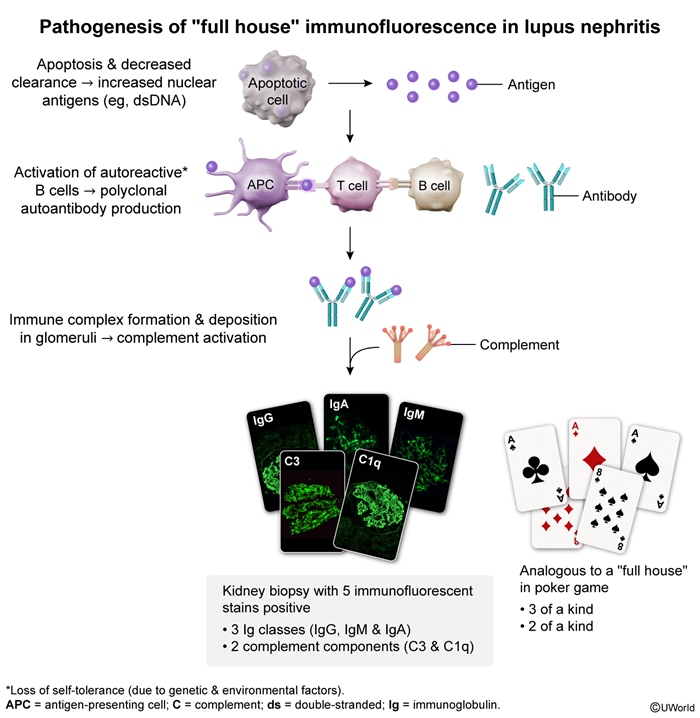
Figure 1
Images
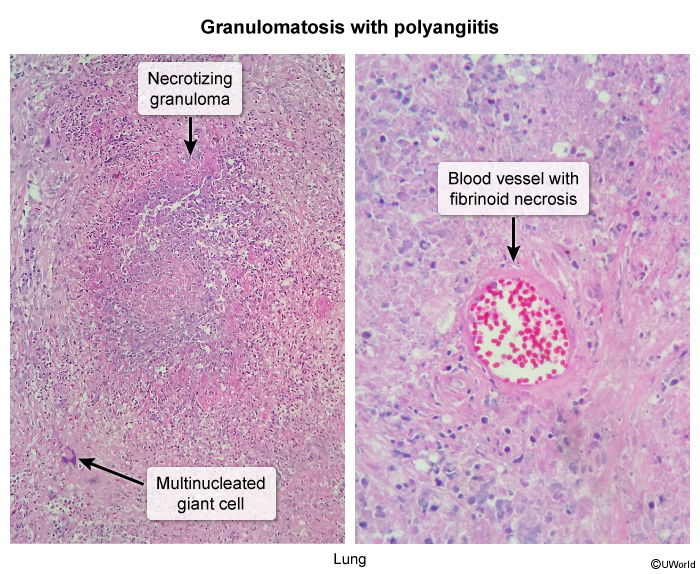
Image 1
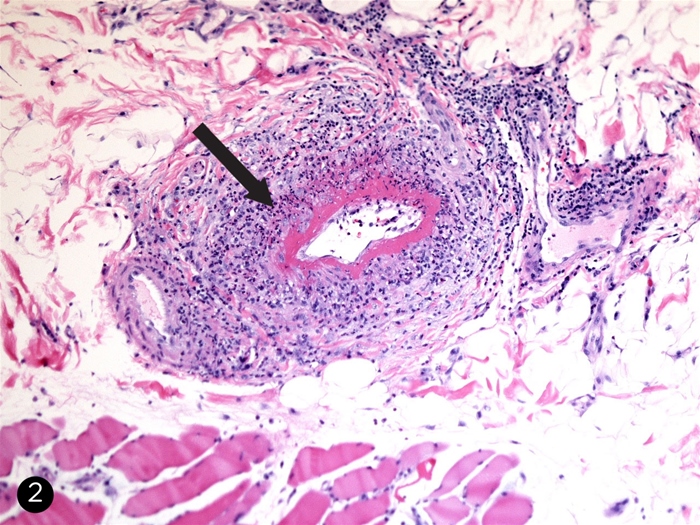
Image 2
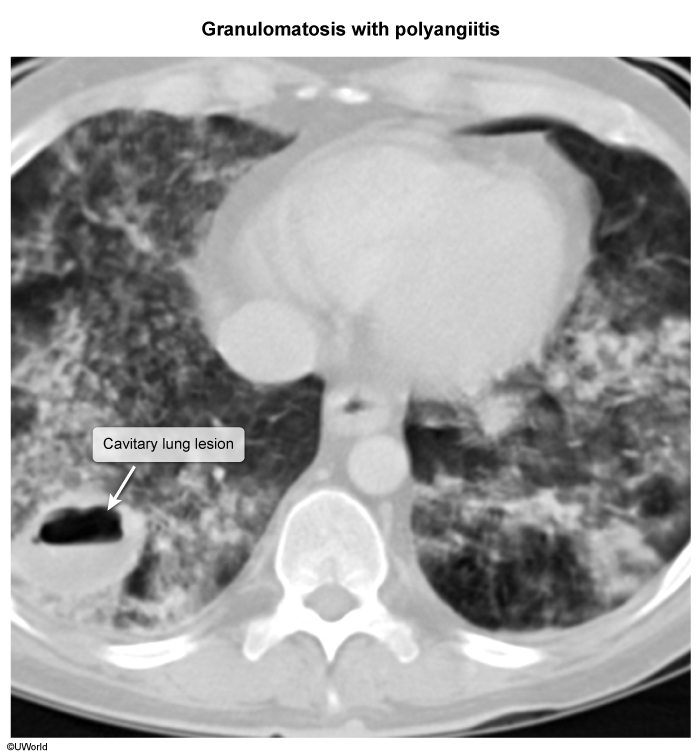
Image 3
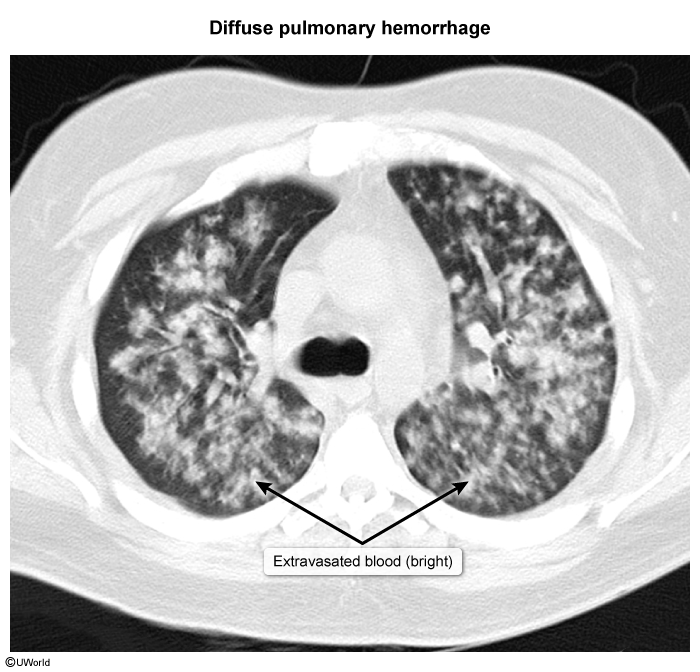
Image 4
Tables
Table 1